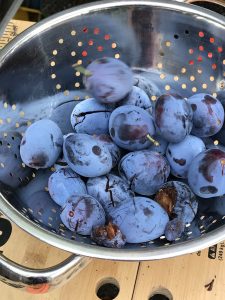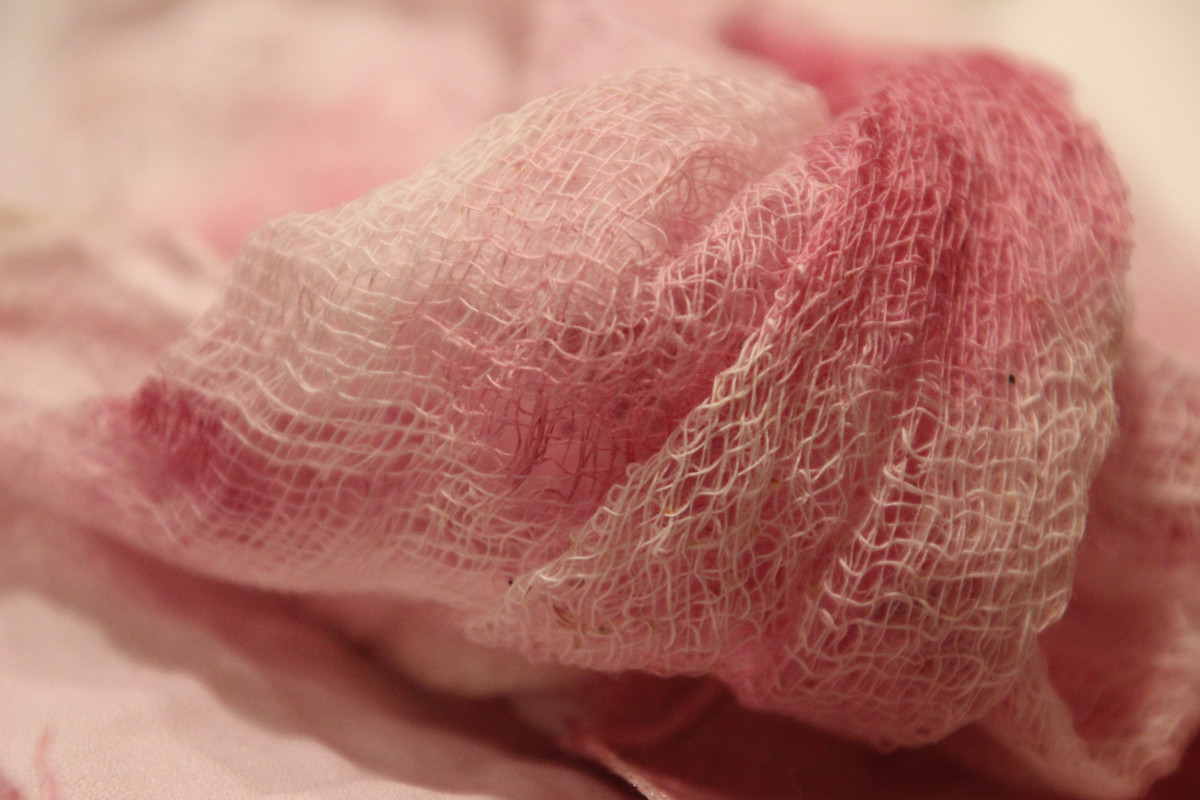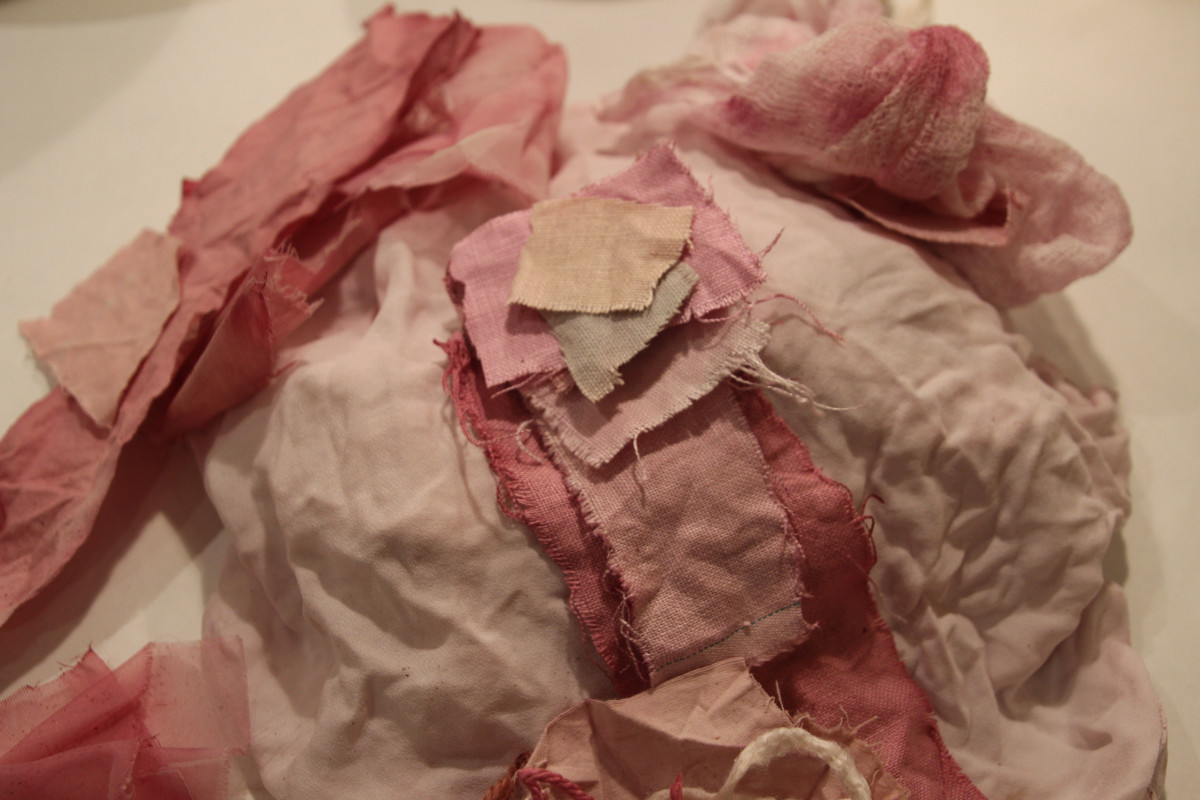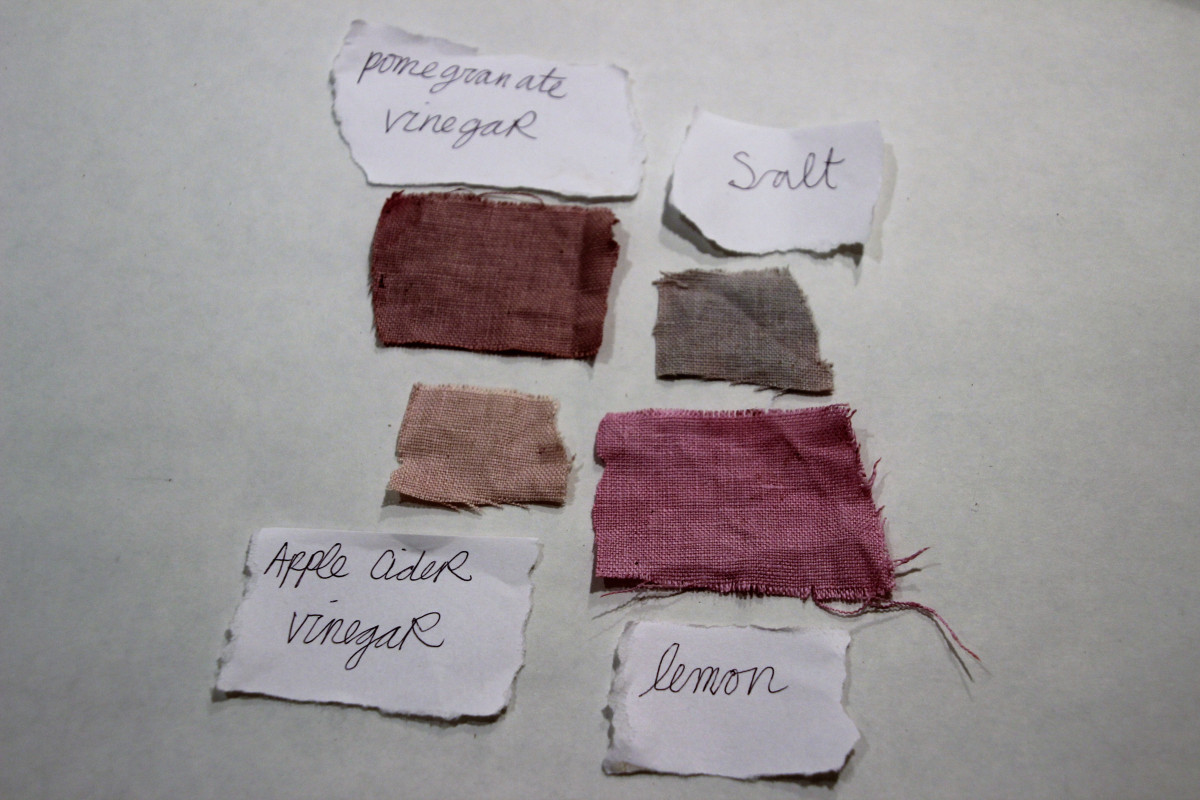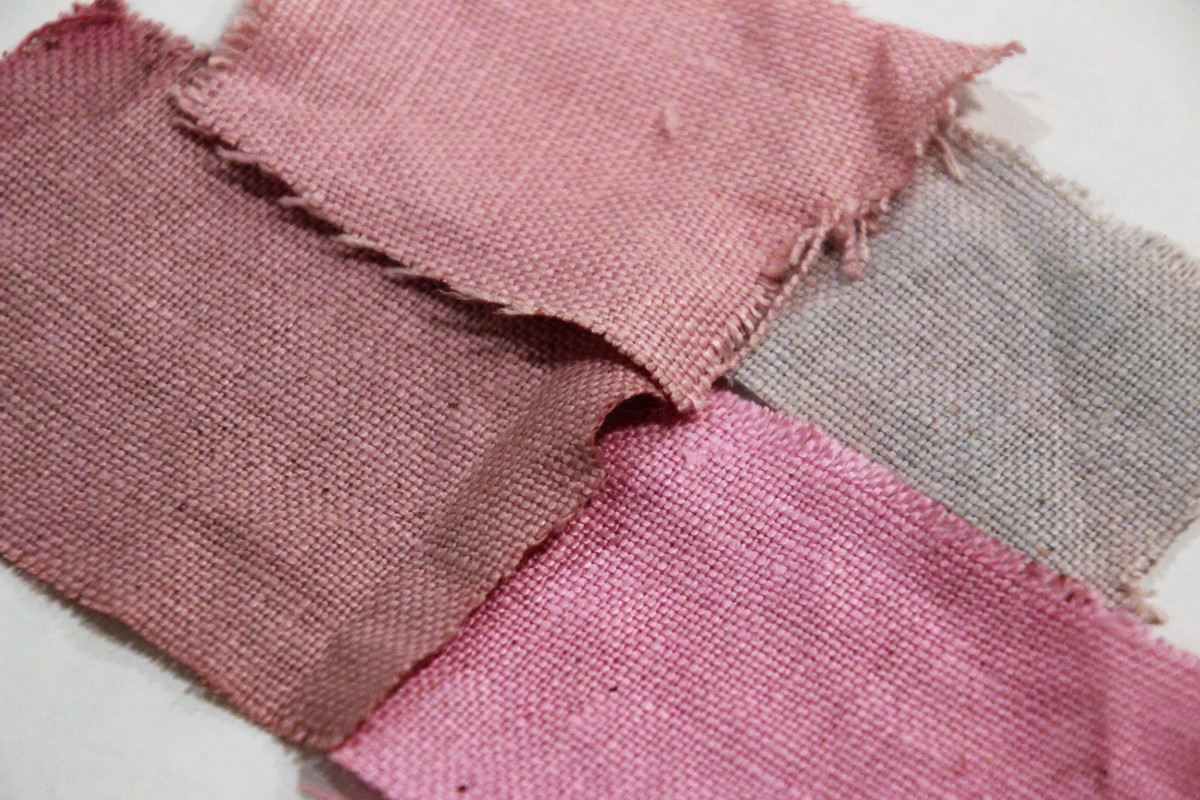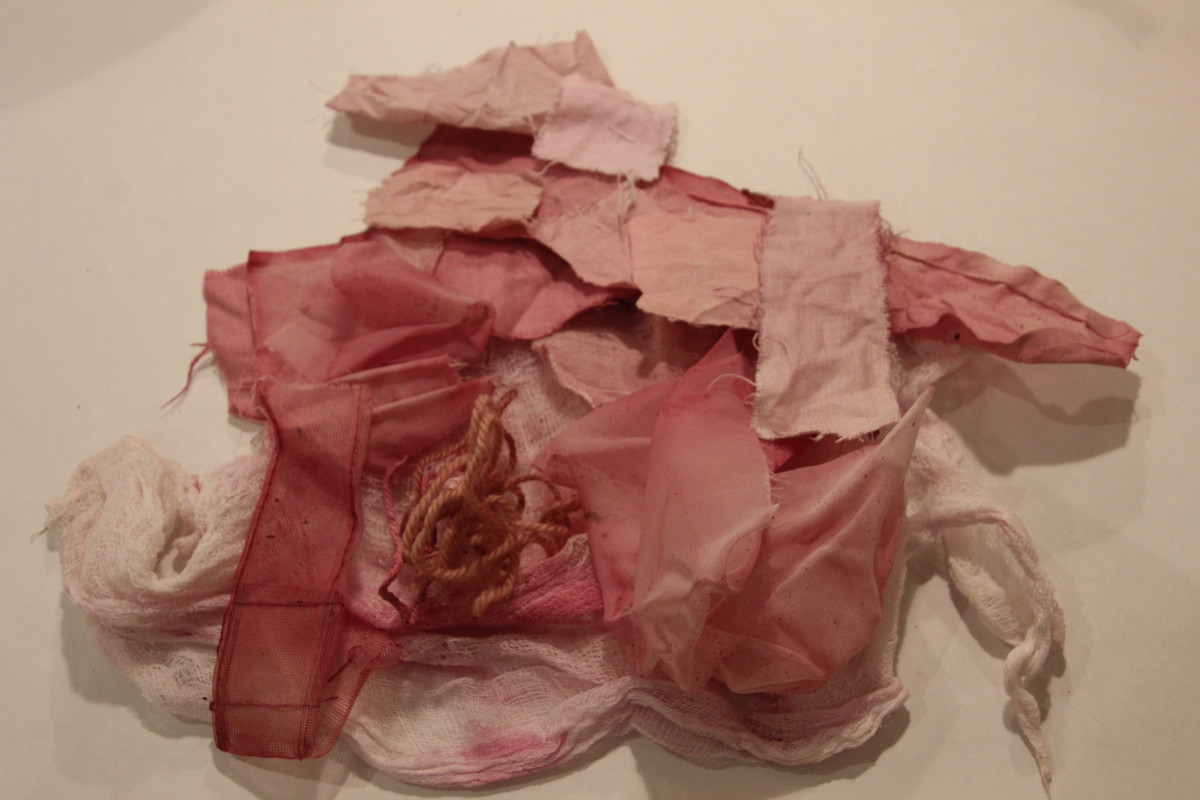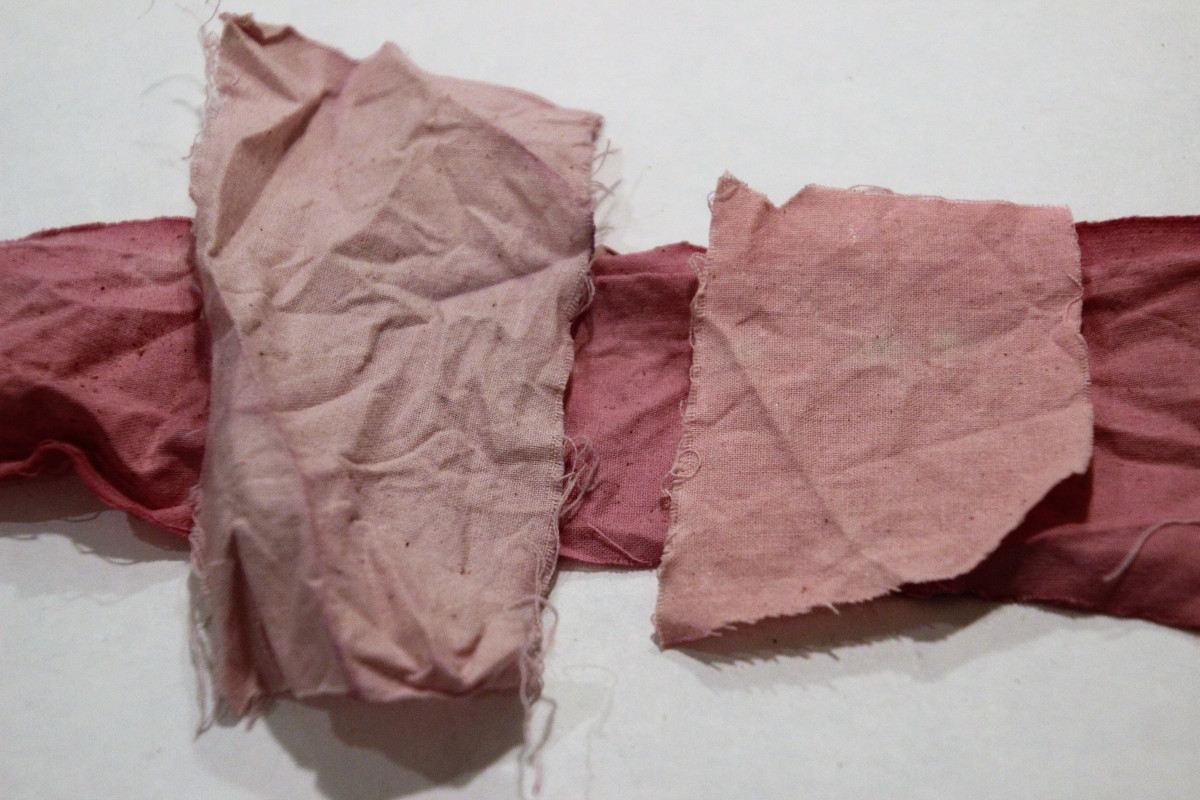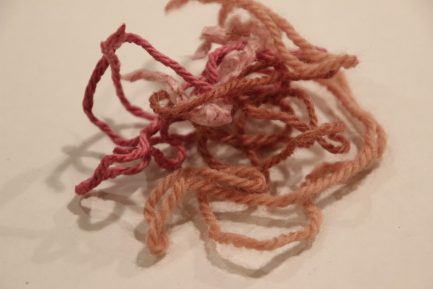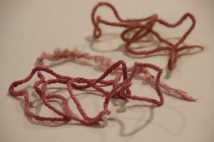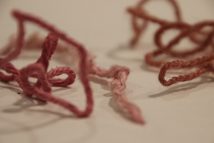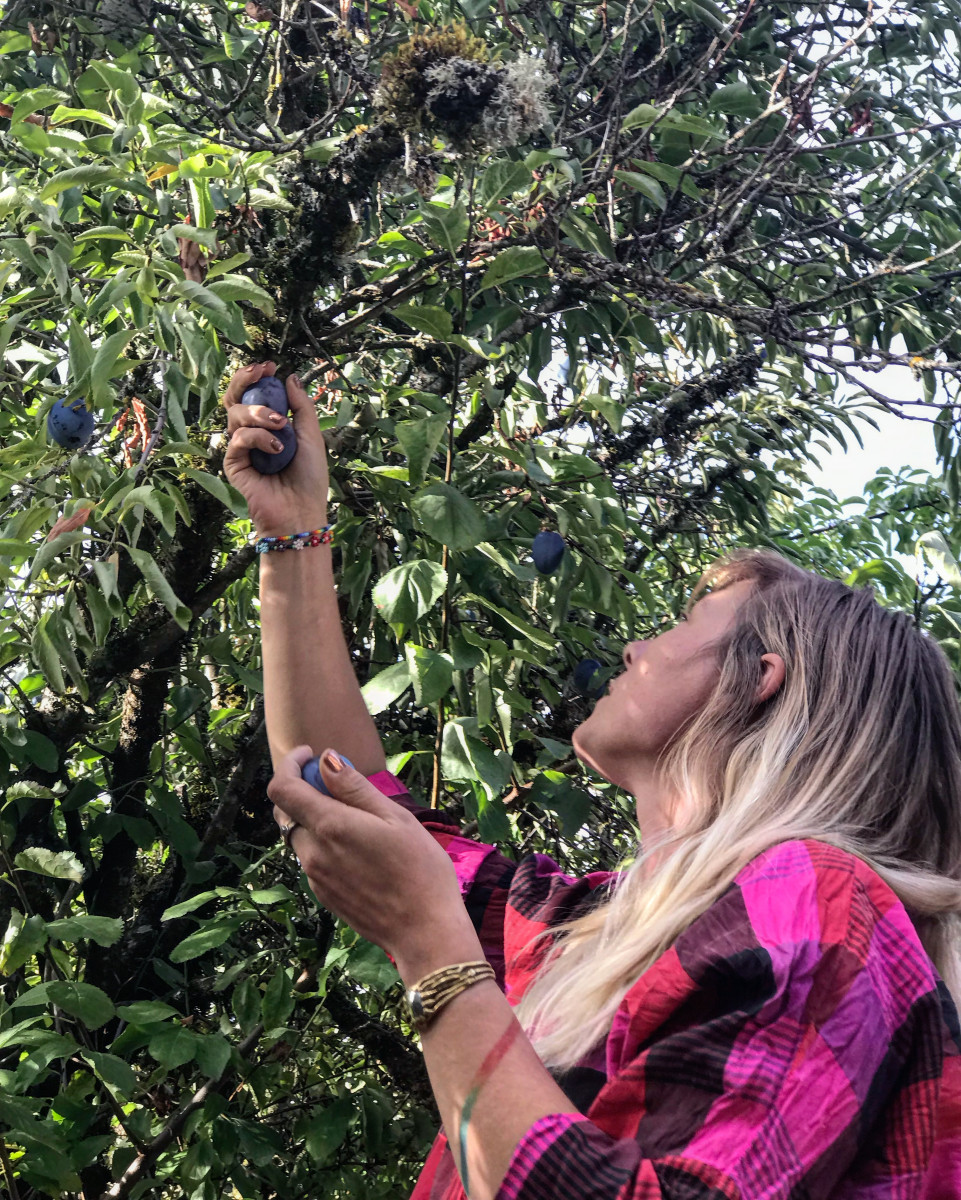
PLUMS Genus: Prunus Family: Rosaceae
The neighbors plum trees hang over my mothers fence, dropping ripe fruit on the side walk to be squished by an unassuming passerby. For years most of these plumbs would simply become earth again. But this year would be different, this year we harvested, the ripe, overripe and the rotten. Because with a little creativity most everything can be used.
A bit about plums… The two most commonly grown plums are The European plum (P. domestica) and the Japanese plum (P. salicina).
Each plum bud has one to five flowers, the flowers have a hypanthium a cup-like structure that holds the petals, sepals and stamens on the outside surrounding the pistil. Once the flower is fertilized the hypanthium falls off leaving the ovary to slowly turn into drupe fruit. Drupe fruit, also known as stone fruit is categorized by its thin outer layer of the ovary skin, with a usually a fleshy middle section and a hard pit. Other examples of drupe fruit are coconuts, almonds, mangoes and cherries.
Plums are resilient plants, they can grow in many regions but prefer a warm and dry climate. Plum trees begin bearing fruit 4 years after they are planted. Like many fruits plums need cold winter temperatures, nights with 45 degrees or below to produce fruit. Generally plum harvest begins in August and Japanese plums are ready for harvest approximately 2 months after the last winter frost. While American plums are generally ready in midsummer and other European varieties follow a couple of months later.
We harvested our plums in late September, which meant many were going ‘bad’. But we did manage to grab some ripe pears as well, in order to make a cobbler with the sweet flesh after the skin was cut off. I attempted blanching the plums as this makes the skin come off much easier. This entails putting the plums into boiling water for a short time then immediately putting them into an ice bath. While this did make the skin come off easier I noticed the water turning purple immediately after the first dip. I switched to cutting the peel off in order to not loose any precious color during the blanching process.
When I was straining the plumb remains through a cheese cloth I was amazed to see the beautiful bright pink that came out.
Once the dye bath was complete I put in multiple unknown synthetic fabrics and yarns, along with some 100% cotton fabric and yarn, wool yarn, polyester yarn, as well as 100% linen.

I experimented with different mordants with the linen and cotton fabrics. There are 3 different ways you can mordant fibers, post-dye, pre-dye and together with the dye. In order to see proper before and after results I did my mordants post-dye. I used lemon, apple cider vinegar, pomegranate vinegar and salt.

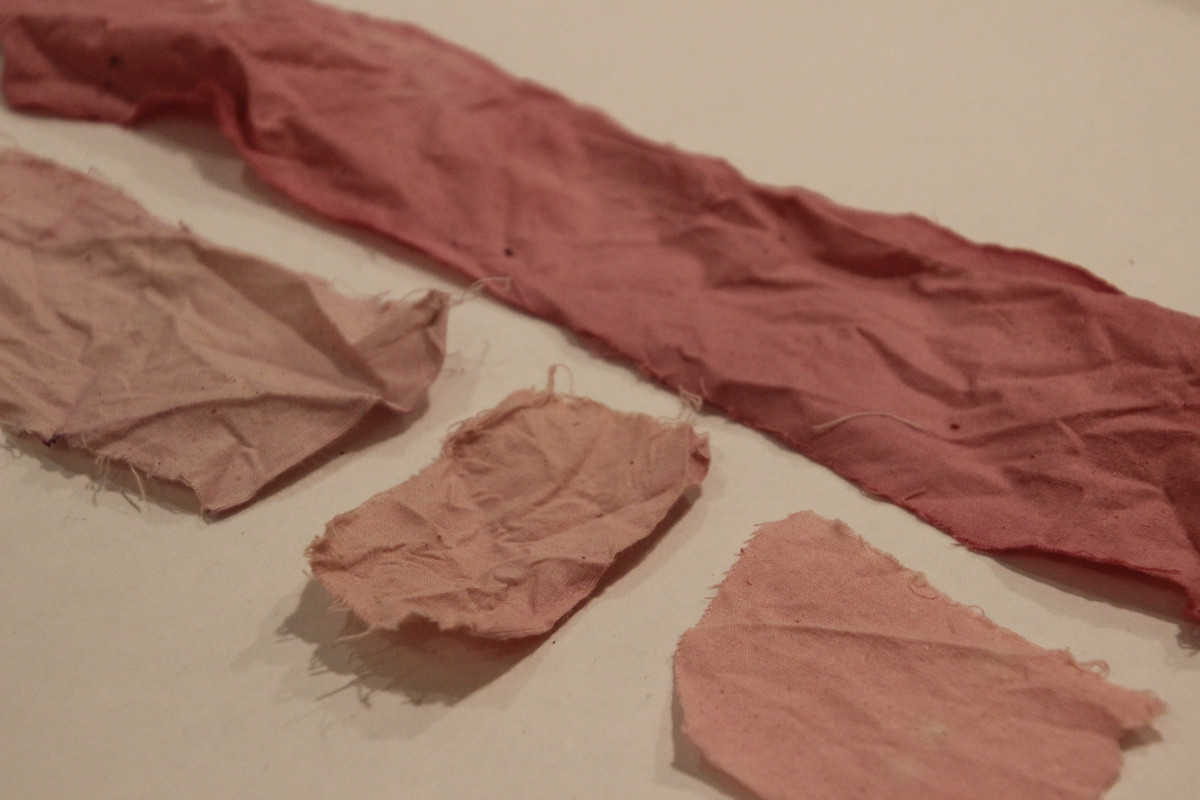
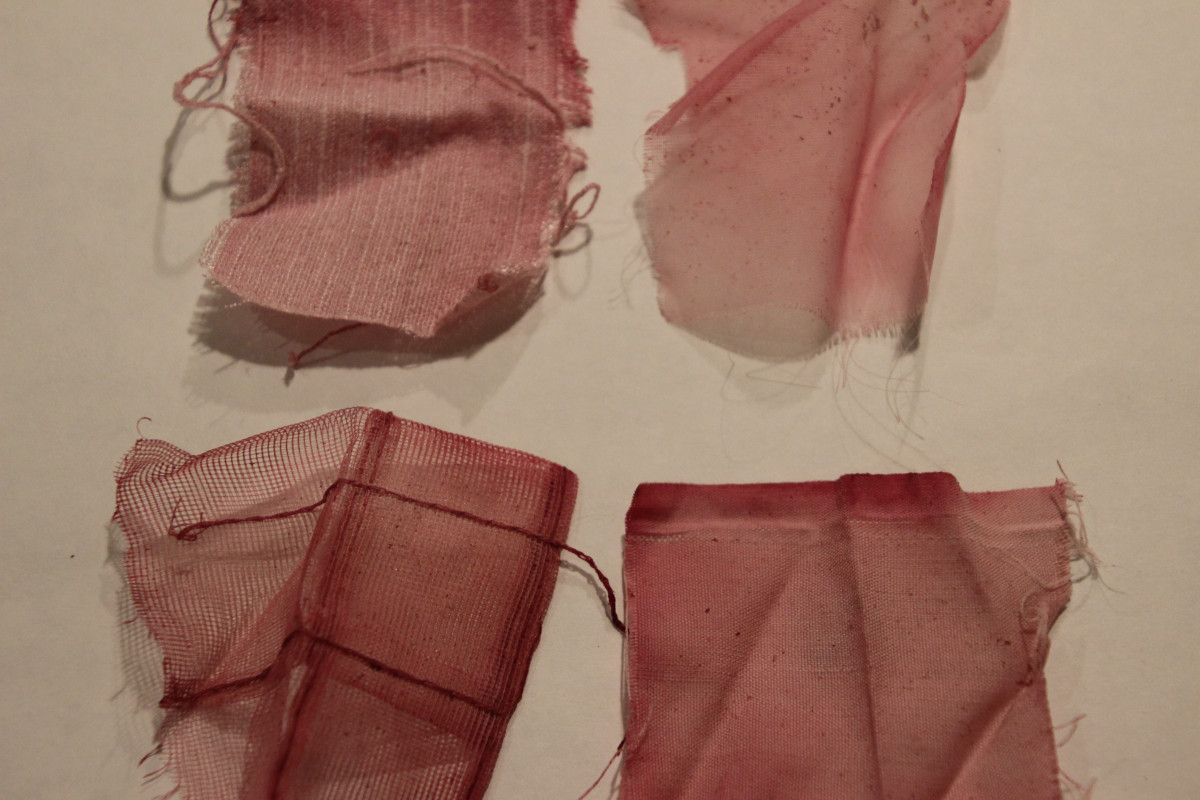
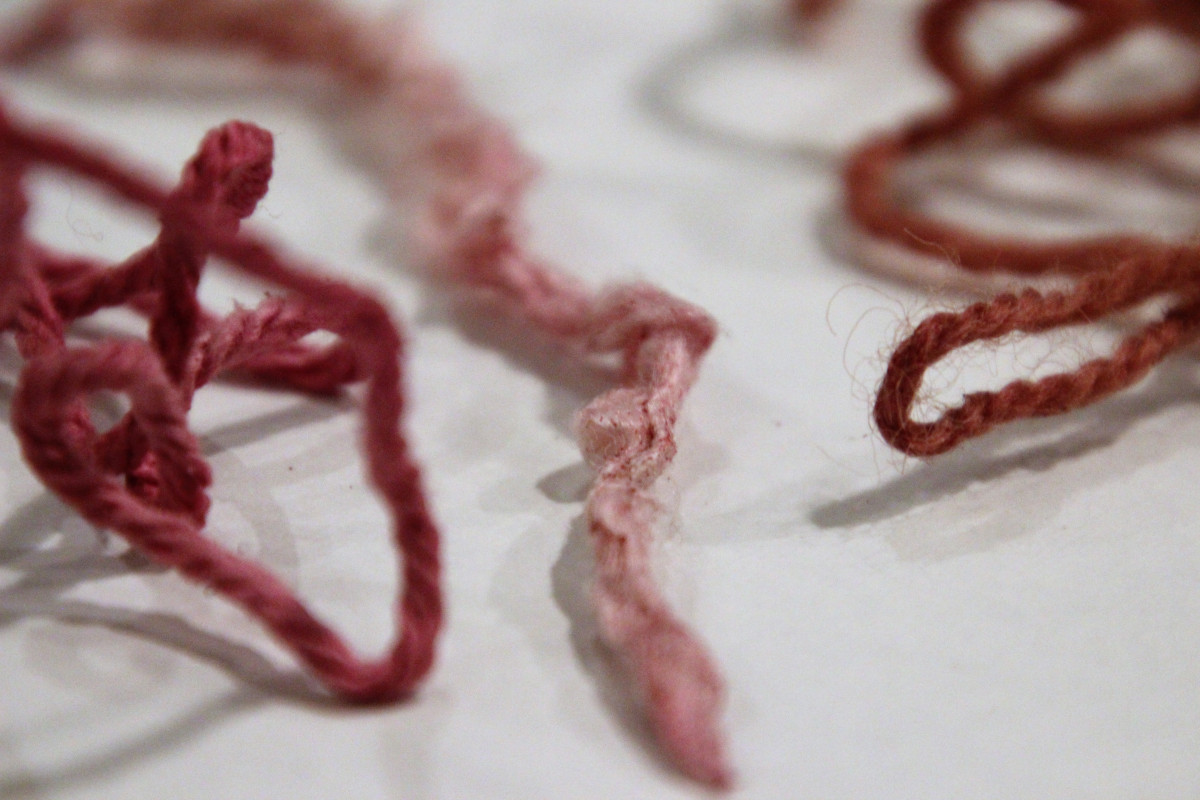

All the while making these dyes we snacked on ripe plums, which are not only delicious but healthy. Fresh plums are a good source for vitamin C, vitamin K, copper and fiber. Plums are full of antioxidants, mostly from a substance called Phenols. Studies on these Phenols have proven to help fight dangerous radicals and to prevent oxygen-based damage to fats. Plums have also been shown to increase iron absorption.
